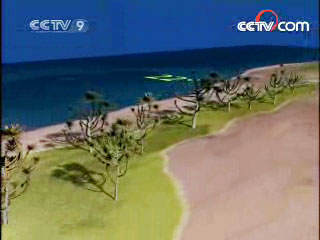------Program code: NS-080606-03955 (what's this?)
Source: CCTV.com
06-06-2008 11:14
Of all the places on earth that are home to exquisite species, Southern Africa is particularly noted. But its flora and fauna stand prone to increasingly violent climate change within the next decades. And that’s a prediction that’s come to have scientific credibility only very recently.
 |
Ahmed Djoghlaf, UNEP Convention on Biological Diversity: Climate change is happening, climate change is most likely the result of manmade activities, and climate change will be with us for at least a hundred years to come.
 |
Proof that climate change is happening has been discovered in Southern Africa. This is the story of that discovery and why it is so important to world class biodiversity hotspots. It involves two scientists and the Quiver tree. The two scientists, Wendy Foden, and her supervisor, Guy Midgley, from the South African National Biodiversity Institute, chose the desert succulent, the Quiver tree, to predict what the future holds.
Wendy & Guy examine a Quiver tree
Wendy flies to Windhoek, to start her journey of discovery in Namibia, in the desert, north-west of the capital, at Brandberg Mountain, the hottest place that Quiver trees can survive – but have they? And will there be any young ones?
Wendy Foden, South African National Biodiversity Institute: Yeah, we will find some young ones, well some live ones, I’m pretty sure, very much hoping. When we land at Windhoek, we’ve got to go up to Okahandja, then across Karibib, Usako then up towards the Brandberg.
The Quiver tree, or Aloe Dichotoma, known also as Kokerboom, is a large succulent tree that grows exceeding slowly in arid desert, in an area called the Succulent Karoo biodiversity hotspot. These resilient trees can live for hundreds of years, but, as the climate heats up, so new trees will have to grow where it’s cooler.
Wendy Foden, South African National Biodiversity Institute: There are the trees, we’ve found them. There’s not much further we can drive. Wow, these were giants when they died.
Guy Midgley, South African National Biodiversity Institute: It highlights the whole problem of migration, for organisms that are essentially sedentary. So we’re asking sedentary organisms, which have achieved an equilibrium with climate for thousands of years, to suddenly become able to move. And that’s a tough ask.
The Quiver tree only exists between 22 and 33 degrees of latitude. The northern end is the hottest and marked by Namibia's highest mountain the Brandberg - which is where Wendy is now assessing the health of the population by measuring circumferences and estimating ages.
